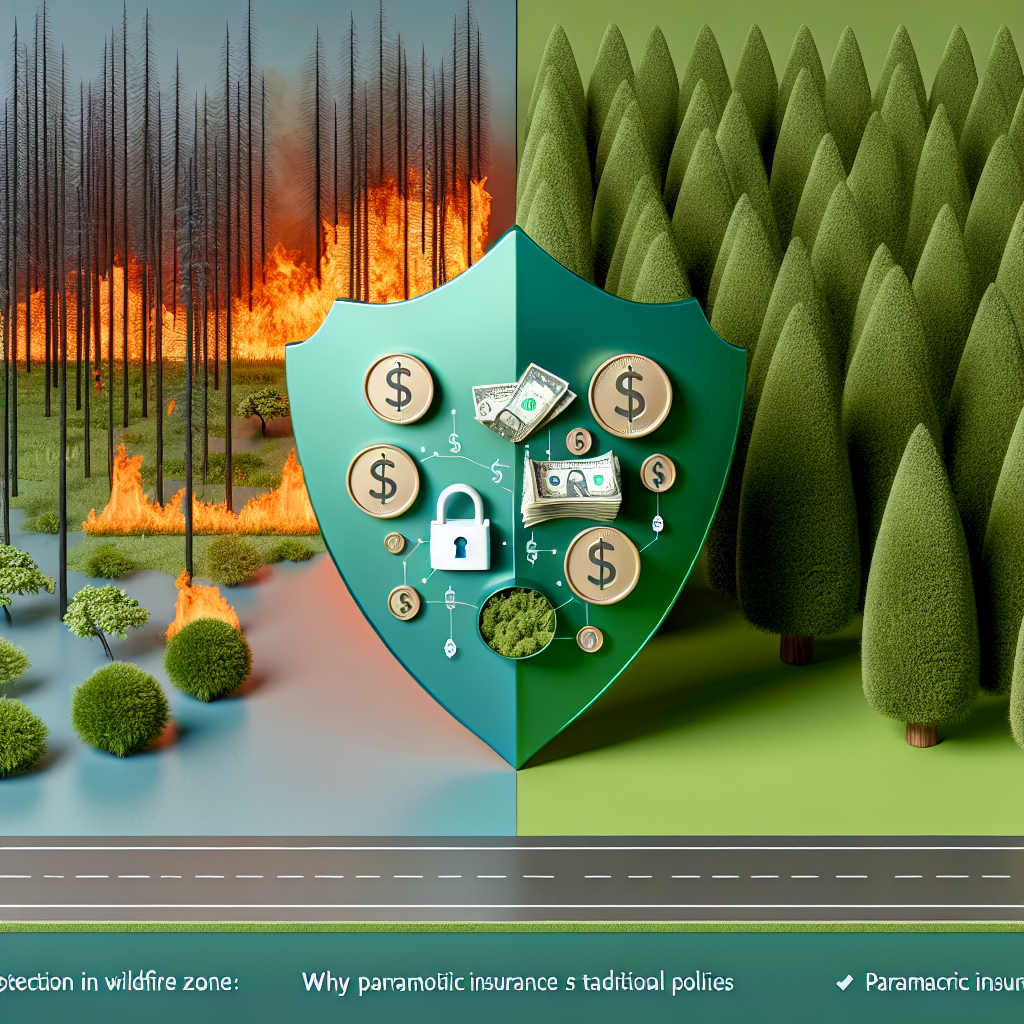The Rise of Parametric Insurance: A Smart Option for Wildfire-Prone Areas
As wildfires become a prevalent threat in many regions, particularly California, traditional property insurance often falls short in meeting the needs of homeowners and business owners alike. The innovative approach of parametric insurance is fast emerging as a complementary solution for individuals residing in wildfire zones. In this blog, we will explore the fundamental aspects of parametric insurance and why it’s an intelligent investment for those vulnerable to the devastation of wildfires.
Key Insights on Parametric Insurance
1. Understanding Parametric Insurance
Parametric insurance operates on a predefined set of criteria or triggers. Instead of waiting for the lengthy traditional claims processing, policyholders receive a predetermined payout when specific conditions are met—such as the severity of a wildfire, measured by satellite data. This swift mechanism allows for immediate financial assistance when it’s needed most and can be vital for those who need to make quick decisions post-disaster.
In contrast to traditional insurance, which often involves extensive documentation and prolonged adjustments, parametric structures aim to eliminate the friction and time delays that can be particularly burdensome following a catastrophe. This outlook is crucial as it allows policyholders to redirect their focus from dealing with claim disputes to actual recovery efforts.
2. Market Growth and Trends
The parametric insurance market is booming. In 2023, it’s estimated to be valued at around $18 billion, with predictions suggesting it could exceed $34 billion by 2033. This growth is fueled by a heightened awareness of climate change risks and a corresponding demand for faster recovery solutions (Source: Global Finance Magazine).
As climate-related disasters continue to evolve in frequency and severity, both individuals and businesses recognize the need for insurance products that not only cover losses but do so in a more timely and predictable manner. As a result, the integration of parametric insurance into broader risk management strategies is becoming essential for those in high-risk areas.
3. Advantages Over Traditional Policies
- Speedy Payouts: In wildfire scenarios, parametric policies can provide funds within weeks, as opposed to the months or even years associated with conventional insurance claims.
- Simplicity: With predetermined payouts based on specific measurable events, parametric insurance simplifies the claims process and removes ambiguities, making recovery less stressful for policyholders.
The streamlined nature of parametric insurance also aligns well with the urgency required during disasters. The simplicity of predetermined payouts means that once the specified level of damage is triggered, funds can be accessed almost immediately, providing homeowners and businesses with the emergency liquidity they need to recover.
The Growing Necessity for Parametric Insurance in Wildfire Zones
4. Challenges with Traditional Insurance Providers
Recent policy changes by major insurers like State Farm and Allstate, which have ceased new underwriting in high-risk areas, highlight the challenges residents face in securing coverage (Source: McGowan Wholesale). Consequently, individuals are increasingly turning to innovative solutions such as parametric insurance.
As insurers tighten their grip on policies available in wildfire-prone areas, the urgency to seek alternative risk management options has never been greater. Without adequate insurance coverage, property owners may find themselves vulnerable to losses they cannot fully recover from, further emphasizing the value of a proactive approach such as parametric coverage.
5. Cost-Effective Solution
While costs can run high (with premiums potentially reaching $50,000 for a $1 million coverage), many see this as justifiable considering the urgent need for quick financial recovery following disasters (Source: Global Finance Magazine).
Investing in parametric insurance can alleviate long-term financial burdens, providing policyholders with a financial buffer that helps them rebuild and restore their lives after wildfires. The upfront costs may seem significant, but the potential cost of being underinsured or uninsured is far more considerable in times of crisis.
Implications for Homeowners and Investors
For homeowners in wildfire zones, integrating parametric insurance into a broader risk management strategy makes sense. It’s not merely an insurance policy; it’s a proactive layer of protection that encourages preparedness against the unpredictability of natural disasters.
By adopting this modern insurance model, homeowners and investors can better safeguard their investments. This preparedness can not only enhance their resilience against fire damage but can also stabilize property values in areas at risk, promoting a more favorable community outlook.
Conclusion
With the increasing frequency of wildfires, the adoption of parametric insurance offers a modern solution that prioritizes rapid response and recovery. By investing in this innovative insurance type, homeowners can ensure both their property and peace of mind are well-protected against the flames of uncertainty.
For those living in wildfire-prone areas, recognizing the value of parametric insurance could be pivotal in ensuring that they are equipped to handle both immediate and long-term recovery from these devastating events.
